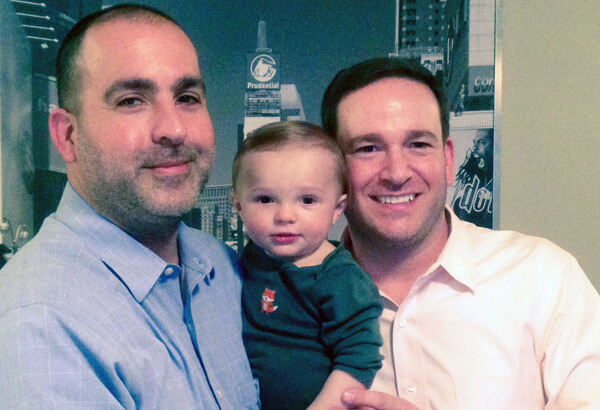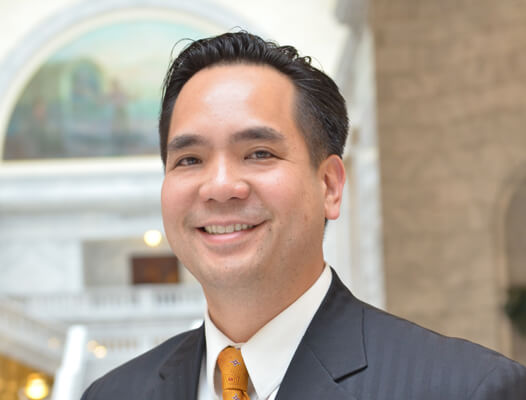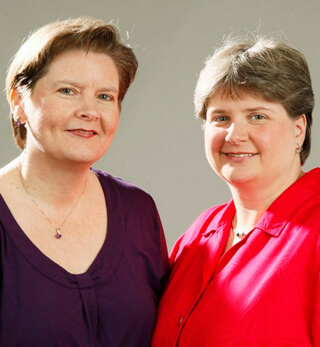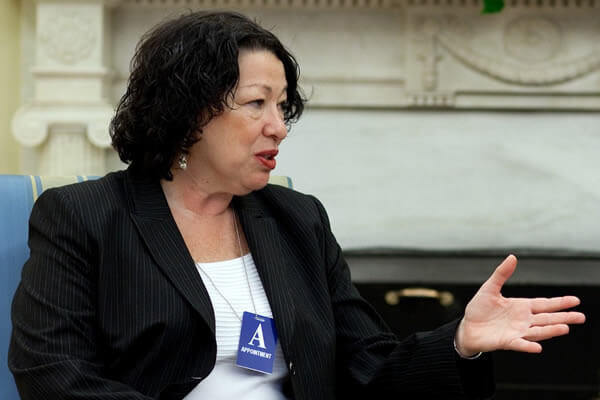New Yorkers Joseph Vitale and Robert Talmas are among the Ohio marriage recognition plaintiffs, having gone to court to ensure that both of their names appear on the birth certificate of their Cincinnati-born adopted son Cooper. | GAY CITY NEWS
On August 6, a three-judge panel of the US Sixth Circuit Court of Appeals held marathon three-hour arguments for appeals in six marriage equality decisions coming from all four states in the circuit –– Ohio, Michigan, Kentucky, and Tennessee.
Eight attorneys — four representing the states and four representing same-sex couple plaintiffs from each state — struggled with defining fundamental rights, parsing state justifications for excluding same-sex couples from marriage, and figuring out whether the court was bound to rule for the states because of a 1972 Supreme Court ruling finding no “substantial federal question” in the marriage issue.
The arguments at the Cincinnati-based Sixth Circuit were held in the shadow of recent decisions by two other circuit appeals panels elsewhere in the nation in favor of the plaintiffs –– as well as more than 20 consecutive rulings by federal and state trial judges all favoring marriage equality.
Cincinnati-based panel hears from eight attorneys in six cases from four states
Despite the recent marriage equality wins, the attorneys for the four states seemed confident and undeterred, pushing forward with their arguments on two fronts. All four states asserted that the central question was whether it was the state’s government and its people or the federal court that should make policy on same-sex marriage. Each ended up relying heavily on Justice Anthony Kennedy’s majority opinion in last year’s Defense of Marriage Act case where he focused on the traditional role of states in defining marriage. Kennedy noted that Congress departed from that history in DOMA’s limitation on what marriages the federal government would recognize, and the court concluded that break was motivated by animus against gay people, an impermissible rationale constitutionally.
The states argued that, by contrast, no animus was involved when voters approved constitutional amendments forbidding same-sex marriages, since the only effect was to preserve the status quo. Gay people in those states had no fewer rights after the amendments were passed than before.
Attorneys representing the same-sex plaintiff couples generally avoided arguing that the marriage bans were motivated by animus, instead focusing on the lack of any rational justification for them. They also pointed to the harms caused to same-sex couples and their children by their inability to marry or have their out-of-state marriages recognized.
Of the three judges on the panel, two seemed very actively engaged in trading questions and comments with the lawyers, while one seemed more like an observer. Judge Deborah Cook, appointed to the court by George W. Bush and known as a “doctrinaire conservative” according to at least one press account, asked few questions and made few comments, and her few words did not suggest a strong disposition about the outcome of the case. Any skepticism she expressed seemed directed at lawyers from both sides.
Judge Martha Craig Daughtrey, appointed to the court by Bill Clinton, appeared strongly predisposed to affirm the lower court marriage equality rulings being appealed. She asked many questions, and seemed most skeptical of the states’ arguments that excluding same-sex couples from marriage would somehow advance their asserted interest in encouraging different-sex couples to channel their procreation into married family life.
When the states argued that gay people should resort to the political process on a state-by-state basis, she pointed out that the push to win women’s right to vote stretched over 78 years and eventually had to go national with a federal constitutional amendment.
The activist on the panel, in terms of controlling the flow of the argument and asking frequent questions, was Jeffrey Sutton, also appointed to the court by George W. Bush and also generally considered very conservative. According to press accounts, he is a strong supporter of states’ rights and of reining in the federal government. But he surprised many observers when he wrote an opinion for the Sixth Circuit rejecting a constitutional challenge to the Affordable Care Act, and some have suggested he could be the swing voter here.
One could conclude from his questions and comments that he was sympathetic to the case being made for the same-sex couples. At the same time, over and over he referred to “pacing” –– that different states might proceed through their democratic processes at different speeds, and in the federal system where the defining of marriage has traditionally been a state function, that could be permissible. Noting recent marriage equality successes at the ballot box and in state legislatures, Sutton asked whether the courts really were the preferred vehicle for advancing the cause. And he talked about the value of “winning the hearts and minds” of the public.
One had the sense, listening to Sutton, that he was not opposed to the idea of same-sex marriage, but was sympathetic to the argument by the states that they should be allowed to move along on the issue at their own pace.
The Michigan and Kentucky cases involved full marriage equality, while the Ohio and Tennessee cases were only about recognition of out-of-state marriages. There was some discussion about whether the recognition issue could be decided without settling the underlying right-to-marry question, though that seemed to point in no specific direction.
Sutton posed to several lawyers the question whether there would be significant practical difficulties in implementing marriage equality rulings, but the state lawyers were unable to think of many, and the attorney for the Ohio couples pointed out that a simple definition statute substituting gender-neutral terms throughout the state code would take care of the problem.
The lawyers for the plaintiffs did an excellent job explaining why state bans on same-sex marriage were no longer constitutional in light of the Supreme Court’s decisions striking down a Colorado anti-gay voter initiative in 1996, the Texas sodomy law in 2003, and DOMA’s ban on federal recognition of same-sex marriages last year. And the lawyers for the states seemed to be grasping at straws in their attempts to persuade the court that the 1972 statement by the Supreme Court that the issue of same-sex marriage did not involve a “substantial federal question” was still binding on lower federal courts. Since the DOMA ruling, every lower court that has ruled in a marriage equality case has agreed that the 1972 precedent is no longer relevant. Today, it hardly seems credible to suggest that it does not present substantial federal constitutional issues.
Lawyers arguing for the same-sex couples were Carole Stanyar of Michigan, Alphonse Gerhardstein of Ohio, Laura Landenwich of Kentucky, and William Harbison of Tennessee. Lawyers arguing for the states were Michigan Solicitor General Aaron Lindstrom, Ohio Solicitor General Eric Murphy, Leigh Gross Latherow of Kentucky, and Tennessee Acting Solicitor General Joe Whalen.
The plaintiffs’ attorneys seemed to make the most effective arguments, though none of the states’ advocates could be dismissed as ineffective. The arguments were sophisticated and Judges Sutton and Daughtrey seemed very engaged. Sutton voiced praise for Harbison’s arguments on behalf of the Tennessee plaintiffs.
At the conclusion of the day, Sutton acknowledged that the Sixth Circuit was not the final stop for these cases, saying the panel hoped to get an opinion out quickly. He clearly recognized that the sooner the court issues its decision, the more likely it will be included among the cases jockeying for position at the Supreme Court this fall as the one selected to make the ultimate determination nationwide.




































